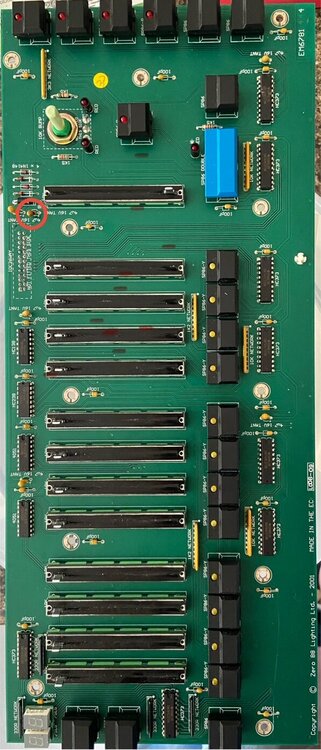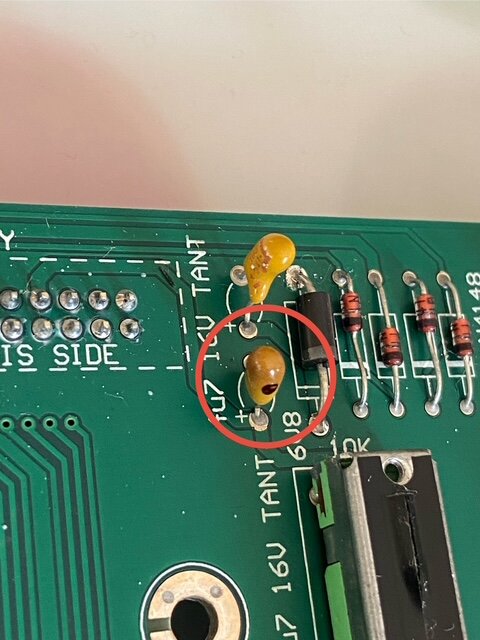All Activity
- Past hour
-
SAVV SCORE Loan App Customer” Care Helpline Number :check_mark. 7970355140 @! 79_70_35_51_40 ) Call Now full.SAVV SCORE Loan App Customer” Care Helpline Number :check_mark. 7970355140 @! 79_70_35_51_40 ) Call Now full.SAVV SCORE Loan App Customer” Care Helpline Number :check_mark. 7970355140 @! 79_70_35_51_40 ) Call Now full.SAVV SCORE Loan App Customer” Care Helpline Number :check_mark. 7970355140 @! 79_70_35_51_40 ) Call Now full.SAVV SCORE Loan App Customer” Care Helpline Number :check_mark. 7970355140 @! 79_70_35_51_40 ) Call Now full.
-
SAVV SCORE Loan App Customer” Care Helpline Number :check_mark. 7970355140 @! 79_70_35_51_40 ) Call Now full.SAVV SCORE Loan App Customer” Care Helpline Number :check_mark. 7970355140 @! 79_70_35_51_40 ) Call Now full.SAVV SCORE Loan App Customer” Care Helpline Number :check_mark. 7970355140 @! 79_70_35_51_40 ) Call Now full.SAVV SCORE Loan App Customer” Care Helpline Number :check_mark. 7970355140 @! 79_70_35_51_40 ) Call Now full.
-
SAVV SCORE Loan App Customer” Care Helpline Number :check_mark. 7970355140 @! 79_70_35_51_40 ) Call Now full.SAVV SCORE Loan App Customer” Care Helpline Number :check_mark. 7970355140 @! 79_70_35_51_40 ) Call Now full.SAVV SCORE Loan App Customer” Care Helpline Number :check_mark. 7970355140 @! 79_70_35_51_40 ) Call Now full.SAVV SCORE Loan App Customer” Care Helpline Number :check_mark. 7970355140 @! 79_70_35_51_40 ) Call Now full.
-
SAVV SCORE Loan App Customer” Care Helpline Number :check_mark. 7970355140 @! 79_70_35_51_40 ) Call Now full.SAVV SCORE Loan App Customer” Care Helpline Number :check_mark. 7970355140 @! 79_70_35_51_40 ) Call Now full.SAVV SCORE Loan App Customer” Care Helpline Number :check_mark. 7970355140 @! 79_70_35_51_40 ) Call Now full.SAVV SCORE Loan App Customer” Care Helpline Number :check_mark. 7970355140 @! 79_70_35_51_40 ) Call Now full.
-
SAVV SCORE Loan App Customer” Care Helpline Number :check_mark. 7970355140 @! 79_70_35_51_40 ) Call Now full.SAVV SCORE Loan App Customer” Care Helpline Number :check_mark. 7970355140 @! 79_70_35_51_40 ) Call Now full.SAVV SCORE Loan App Customer” Care Helpline Number :check_mark. 7970355140 @! 79_70_35_51_40 ) Call Now full.SAVV SCORE Loan App Customer” Care Helpline Number :check_mark. 7970355140 @! 79_70_35_51_40 ) Call Now full.
-
ai8h0dld8 joined the community
- Today
-
@Veit0r Agree so much with @kgallen. They are great desks and make so much possible. The logic is biased towards programming shows and running them on the button but you can turn all that off and take control yourself if you want to. Enjoy your journey of discovery and come back to this forum if you need help.
-
@Veit0r fantastic! That’s great to hear. Hope your events go well! Thanks for letting us know. You know where we are if you have any other queries. As we’ve found there are some tricky areas. These consoles are a lot more powerful than they appear from the outside - they look a lot like a simple old-skool lighting desk but because of full support for tracking, move on dark, overlaying playbacks with LTP and HTP, it can very quickly require much more experience and familiarity with more advanced concepts. I’ve seen from other posts that this can confound, confuse and frustrate users who haven’t yet gained that knowledge and experience.
-
Hi! Just a little follow up.. it works! Thanks - we are happy now. School is able to do all the programming for the artistic graduation now and I'm a lot more confident in helping out. Great to have both of you helping.
- Last week
-
Davidmk started following Some channels altering their default intensity "by themselves"
-
I don't think I can actually help here - beyond asking dumb questions on the off chance you haven't already asked yourself them. So it's the actual default value, as in showing 69% yellow in the outputs window, the channel fader showing zero in the faders window (in channel mode), the UDKs released in the fader window (in playback mode)? What about in source mode - does the channel show D? Given how difficult it can be to set defaults (and get them to stick) deliberately, its hard to believe they got set accidentally (although a macro could do it). Is it, perhaps, down to dodgy faders - have you done a test mode start up? Then again, they didn't get parked somewhere along the line (red background)? (I did say dumb questions.)
-
I've had an odd thing happen twice now running 8.0.0. We use the desk to busk a number of looks from the subs and wings with static states on the UDKs, with program changes very infrequent and generally done by me. Last week I had a report of some lights being on unexpectedly and when I looked into it a number of fixtures had picked up default values of 69%. (Not the fixtures complained about however!) I saved the show and reset the values, doing some minor tidying up of default and home levels. However I reloaded the show I originally saved and all was as expected. Today I got another call and a different set of lights were sitting at 92% with all faders down (ther than GM, which still controlled them). A restore of my tweaked showfile put it back to normal. I'm thinking two possiblities here, firstly maybe the 2032 needs swapping out, or secondly someone new is driving the desk and they are more "experimental" in playing back the looks, having discovered an obscure bug in the process. Has anyone else encountered something similar?
-
SoleJan changed their profile photo
-
Alright thanks to you both, In my memory ZerOS Remote was just easier for remote programming and I've got a project where I'm not at the console while programming (and its easier to be remote there). I saw the keyboard shortcuts on ZerOS Monitor but with the Remote you had it on the display, like the syntax or the position grid. But I'm sure I'll figure something out.
-
Archie D started following Remote Control
-
Hi there. There is a specific ZerOS Monitor app that was produced for Windows. There is also a MacOS version if you prefer. However, there was not a ZerOS Remote app produced for Windows for public use (to my knowledge, I saw Edward using ZerOS Remote on Windows in a training video). Anyhow, ZerOS Monitor on a laptop or desktop does function as a sort of "remote", as it allows for keyboard shortcuts to be entered, such as R for record or U for update. They are downloadable at the links below provided by the ZerOS Software page on Vari-Lite's website. ZerOS Monitor (Windows): https://vari-lite.s3.eu-west-1.amazonaws.com/software-firmware/zeros-monitor-2.0.0.zip ZerOS Monitor (iPadOS, iOS & MacOS): https://itunes.apple.com/gb/app/zeros-monitor/id1033159176 For Android, you can of course use the APK files listed in the thread, kindly provided by kgallen. If you prefer to look at the page to verify the download links: https://www.vari-lite.com/global/products/zeros-software
-
Well there is PhantomZerOS which is a full console for Windows. But I’m not aware of a monitor/remote app for Windows, only Android/iOS devices.
-
Thanks! So to run a Monitor like app you have to do it through a Android Emulator? There isn't one for Windows itself?
-
Hi Archie, thanks very much for the message and the update. Funny old thing you finding that on Ebay. Yes, still have the FLX and wing to go but I have now taken that out of the touring flightcase. I suppose I better get this advertisement revised now. Anyway best of luck with the dongle and glad it is all working for you.
-
kgallen started following Frog channel won't go to 00 or FF [FIXED] and Remote Control
-
See this thread for the Android apps:
-
SoleJan joined the community
-
Hello, I may be a little late for this, but what exactly was the reason for ZerOS Monitor to be removed from Android and ZerOS only funtioning on iOS? Is there another way of using external devices (preferably Windows) as a Remote? I Thanks up front. Jan.
-
[NO ACTION REQURIED] Documenting here a problem I had on my Fat Frog and the repair required. This can equally apply to other consoles in the Frog range - and in time possibly other consoles with faders. Thanks to @Edward Z88 who provided support despite having moved on from Zero88 and @RJP for providing schematics. The background: I bought my Fat Frog new in 2006, so at this point it's 19 years old. It's largely in "as new" condition as I look after my kit. I've not used it regularly since 2015 when I bought my FLX, but it has had the odd outing, most recently in 2021. I've stayed on top of the CR2032 battery replacement and I'm blessed that the original floppy drive still works perfectly. All faders are still in pristine condition. The issue: This was an intermittent problem, so hard to narrow down. The usual range of channel intensity values shown on the Output Screen is 00-FF (FF in this case means "full" or 100%, not hexadecimal 0xFF). On occasion my console would only move from a low non-zero value, say 02 to 05 (percent) up to a maximum of around 94-98 (percent). I first saw this actually on the fixtures section with the thumb wheel (so not a linear fader), where the fixture intensity would only go up to 96%. Subsequent testing showed the same issue on the generics faders (including masters). Strangely this issue also showed when playing back a memory stack (where the memories had successfully been programmed with 100% intensity values). You can enter test mode by holding the F1 key whilst powering up. In this mode, I could see the 8-bit values of the faders (all of them on the console) would only travel between about 0x05 and 0xFA rather than 0x00 to 0xFF. OK, cut to the chase, what was the issue... After some testing internally, it was identified that the reference voltage rail for the fader banks was sometimes low. This VREF should be around +5V with respect to its AGND. Practically it will be around +4.8V (and I determined that it should not go below +4V for correct operation). On occasion this reference voltage was measured as low as +2.8V and this is when the issue presented. After quite some time this was tracked down to a failed 4.7uF/16V tantalum capacitor on the Submasters PCB that is used to decouple the VREF locally to this board. There is a similar capacitor on all of the boards with faders (or potentiometers) and they are all effectively in parallel across VREF/AGND, so a failure of any one of them would result in similar failure symptoms. After removing the Submasters board it only took a couple of minutes to replace the capacitor. In this case I used a 4.7uF electrolytic, which is good enough in this application - and had to lay it down as it was slightly taller and would have fouled the front panel). So far the issue seems resolved. Hope this might help others who may have a similar issue as our Froggy friends age more. Note: Essentially the same circuit is used everywhere in Zero88 (and likely other brand) consoles for reading the faders. The faders, usually 10K, have a VREF at the top, a GND (0V) at the bottom and the wiper goes via some 4051 analogue muxes and finally feed into an ADC channel on an embedded micro. Here are a couple of photos of the Submasters board and of the failed tantalum capacitor which is clearly discoloured brown when compared to similar components.
-
Hi there! Thanks for the Unlock Dongle from ebay, received today, plugged it in and works like a charm. Got it outputting dmx over my ENTTEC USB DMX Pro into one of my LED lights and hope to use it on a bigger scale soon! Sorry to see the FLX + Wings still haven’t gone, they’re really useful kit from my point of view and someone could really benefit from them. Best wishes.
- Earlier
-
Smart tag... Great at what it's meant for (recording cues in a stack for playback "on the button") confusing and a nuisance under other circumstances, especially for setting up a desk for busking (IMHO). Tracking similar. Default values, again great at making sure something happens when you raise intensity but default colour of white seems to throw a lot of people. Personally, I set R=G=B=0 as default for all RGB fixtures as a matter of course (and then get confused when I raise intensity and get full on black before remembering that was what I asked for 😁). Whilst having a mini rant... social media may not be the best place to look for help @kgallen and I and a few others watch this forum regularly and there's a lot of expertise here.
-
When you turn SmartTag off you are taking complete control of what parameters are tagged and thus recorded. In this case I’m selecting the fixture, modifying the colour attributes (which tags them - makes the background ‘blue’), then when I RECORD I turn off SmartTag which says ‘hey console I’m in charge I just want you to record the colour attributes I changed and nothing else, just do as I say and nothing more’. In the example of reprogramming defaults I agree it’s nothing to do with e.g. move on dark (this is just one example of where SmartTag usually helps the programmer), just by turning it off I’m in explicit control of what is recorded (and also In this case intensity was zero so SmartTag would have caused my colour parameters changes to be ignored). Note that the colour attribute is by default set as ‘not separate’ (changeable in Setup). This means that if you adjust one colour parameter e.g. red, all of the colour parameters are tagged as it’s assumed that you want to create a certain colour and this requires all colour emitters to be recorded to recreate that. If you really only wanted to record the red emitter you would need to manually untag the blue, green, amber, colour wheel etc parameters (to make their background ‘black’) so they weren’t recorded. When played back, only the red emitter would be controlled, the blue, green etc would stay as they were. This is very powerful but can also be very confusing for inexperienced/basic users. Note that beamshape parameters default to ‘separate’ as it’s assumed that if you were changing e.g. the zoom you didn’t also want to record e.g. the gobo. Some advanced programmers have SmartTag turned off permanently as they always want explicit control of what is recorded via tagging, especially if they are setting up a range of ‘partial looks’ on playbacks/submasters that they’ll use to busk with. If you’re programming a theatre stack then for many ‘normal’ users (myself included) SmartTag is usually on. Note also when looking at your showfile I did it in PhantomZerOS which I started in FLX mode (not FLX S mode as your actual hardware). This gives me access to some more features, like the Source screen. This allowed me to see (but we already ‘knew’) that your fixture was controlled by ‘Default’ as the fader was lowered. I selected the fixture so I could see the parameters details, then on the Source screen I saw the colour parameters change to ‘D’ (and also saw the flick of B=G=255 in the DMX window) as I lowered the fader. Aha! Default is white (as we expected) and causing that flick in colour as you first reported. Reprogramming the default to R=G=B=0 was easy after that. Happy programming - let us know how you get on and any other questions and we’ll try to help.
-
Okay, I think i'm able to do it now. To be honest, its not clear to me why I have to disable smart tag before recording the new default. Move on dark was completely ignored from me because... no stepper motors The real blocker while all the testing was: I had the "Show Record & Update Window" set to External display, but closed the external display view since the real console has no display output. So I never saw the SmartTag Setting and had to google after you mentioned it how to get it. I just made the defaults in the "real" file for all the fixtures and reenabled the SmartTag again to be able to "easily" create new cues without having to tag all the channels. I will try it on real hardware as soon as possible and let you (and reddit) know. Thanks again! PS: The SmartTag topic just unlocked some SGM Pilot3000 memories in my mind...
-
@Veit0r when adjusting values you want the background of the field above the encoder wheel to be blue not black. Blue means the parameter is tagged. This is the information the console uses to know what to record - it records tagged values. If you click the field to make it have a black background you untag it. The console will then not record the change. Also in the case of reprogramming the default I turn off SmartTag. This is because I wanted to reprogram the RGB default values whilst I had the intensity at zero (and not tagged). SmartTag will only record intensity (at zero) if intensity is zero, it won’t record other tagged parameters (this is related to allowing Move On Dark to work). Hope that clarifies things and you can now have more success with your programming! https://www.zero88.com/manuals/zeros/controlling-fixtures/tagging
-
Hm.. okay! I just tried it in phantom, I think the one thing I didnt get was: when selecting the colors & intensity for the default value the buttons have to be black not blue. This feels very unintuitive for me. However after changing the values and "deselecting" them before recording to the default via home button my first test playback works as I expect. The bad thing is, I cant get another color playback to work.. it simply ignores my settings and does nothing. I'll play around and let you know. I swear, i tried the process at least 5 times and it worked on the last attempt when tapping the values to black background. I will start from scratch again with the file I sent to really understand it. Thanks for your help already!







